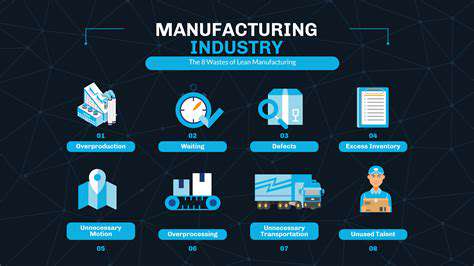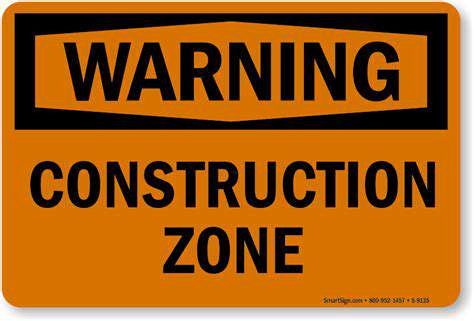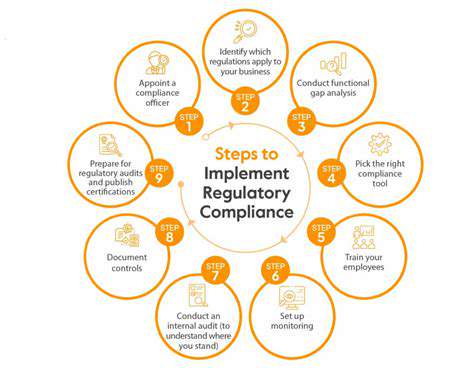Addressing Challenges and Ethical Considerations
Off-Target Effects and Unexpected Outcomes
CRISPR technology, while revolutionary, presents the potential for unintended consequences. Off-target mutations, where the gene-editing tool modifies DNA sequences other than the intended target, can have unpredictable and potentially harmful effects on the plant's genome. Understanding the full spectrum of potential off-target effects and developing robust methods to detect and mitigate them is crucial for responsible CRISPR application in plant breeding. This necessitates advanced screening techniques and rigorous experimental designs to ensure the safety and predictability of the edited plant lines.
Furthermore, unforeseen interactions between the edited genes and other parts of the plant's genetic makeup could arise. These interactions might manifest as unexpected phenotypic changes, impacting traits beyond the intended target, such as yield, disease resistance, or nutritional content. Thorough phenotyping and long-term monitoring of the edited plants are essential to identify and address these unanticipated effects, ensuring that the benefits of CRISPR-mediated modifications outweigh the risks.
Regulatory Frameworks and Public Perception
The rapid advancement of CRISPR technology necessitates the development of clear and consistent regulatory frameworks to govern its application in plant breeding. These frameworks should balance the potential benefits of enhanced crop production with the need to address concerns regarding unintended ecological consequences and potential impacts on human health. Open dialogue and public engagement are critical to fostering trust and ensuring that the regulations reflect societal values and concerns regarding genetic modification.
Public perception of genetically modified organisms (GMOs) is a significant factor that influences the acceptance and adoption of CRISPR-edited crops. Transparent communication about the technology, its benefits, and potential risks is paramount. Educating the public about the scientific basis of CRISPR and its potential applications in agriculture can help dispel misinformation and build public confidence in the technology.
Gene Flow and Environmental Impacts
The potential for gene flow from CRISPR-edited crops to wild relatives poses a significant concern. If edited genes spread to wild populations, it could lead to unforeseen ecological consequences, potentially disrupting biodiversity and impacting natural ecosystems. Careful consideration of the potential for gene flow and the implementation of strategies to minimize this risk are crucial in the development and deployment of CRISPR-edited crops.
Intellectual Property Rights and Access to Technology
Intellectual property rights surrounding CRISPR technology and CRISPR-edited plant varieties are complex and require careful consideration. Establishing clear guidelines on patent rights, licensing agreements, and equitable access to the technology is essential to prevent monopolies and ensure that the benefits of CRISPR-mediated plant breeding are accessible to a wide range of stakeholders, including farmers in developing nations.
Economic Viability and Societal Benefits
The economic viability of CRISPR-edited crops needs careful assessment. The cost of developing and deploying these crops, including research and development, regulatory approvals, and potential market acceptance, must be weighed against the potential benefits, such as increased yields, enhanced nutritional content, and reduced pesticide use. Understanding the potential return on investment and assessing the societal benefits, such as food security and poverty reduction, is critical for the responsible implementation of this technology.
Ethical Considerations in Crop Improvement
The use of CRISPR technology raises fundamental ethical questions about the nature of crop improvement. Discussions about the moral implications of altering plant genomes and the potential impacts on agricultural practices and food systems are crucial. Defining ethical guidelines for the application of CRISPR in agriculture is vital for ensuring its responsible and beneficial use.
Transparency and Accountability
Transparency in the research, development, and deployment of CRISPR-edited crops is essential for building public trust and addressing concerns. Researchers, developers, and regulators have a responsibility to be transparent about the methods used, the potential risks and benefits, and the long-term impacts of this technology. Establishing mechanisms for accountability and oversight is paramount to ensure that the application of CRISPR aligns with ethical principles and societal values.
Future Applications and the Path Forward

Emerging Technological Advancements
The rapid advancement of artificial intelligence (AI) and machine learning (ML) is poised to revolutionize numerous industries, particularly in areas where complex data analysis and decision-making are crucial. These technologies are not just theoretical concepts anymore; they are transforming how we approach problems and creating new opportunities for innovation across the board. This technological leap is expected to significantly impact various sectors, from healthcare and finance to manufacturing and transportation.
Impact on Healthcare Delivery
AI-powered diagnostic tools are already demonstrating remarkable potential in healthcare, allowing for faster and more accurate diagnoses compared to traditional methods. These tools can analyze medical images, patient records, and other data to identify patterns and potential health risks, ultimately improving patient outcomes and reducing healthcare costs.
Moreover, AI can personalize treatment plans based on individual patient characteristics and genetic predispositions, leading to more effective and tailored therapies. This personalization is crucial for improving treatment responses and minimizing adverse effects.
Transforming Financial Services
The financial sector is undergoing a significant transformation driven by AI and machine learning. From fraud detection to risk assessment, AI algorithms are proving invaluable in identifying patterns and anomalies that might otherwise go unnoticed. This capability allows for more proactive risk management and fraud prevention, safeguarding financial institutions and their customers.
Revolutionizing Manufacturing Processes
In the manufacturing sector, AI-driven automation is streamlining production processes, increasing efficiency, and reducing operational costs. Smart factories equipped with AI-powered robots and systems can optimize production lines, predict equipment failures, and ensure quality control at unprecedented levels. This results in improved productivity and higher quality products.
Enhanced Customer Experience
AI is significantly impacting customer experiences across various industries. AI-powered chatbots and virtual assistants are providing instant support and resolving customer queries 24/7, enhancing customer satisfaction. Furthermore, AI can analyze customer data to personalize product recommendations and marketing campaigns, leading to increased customer engagement and loyalty. These technologies are creating a seamless and personalized customer journey.
Ethical Considerations and Responsible Development
While the potential benefits of AI and machine learning are immense, it's crucial to address the ethical considerations that arise with these powerful tools. Bias in algorithms, data privacy concerns, and the potential for job displacement are critical issues that require careful attention and proactive solutions. Responsible development and deployment of these technologies are essential to ensure that they are used for the benefit of all stakeholders.











